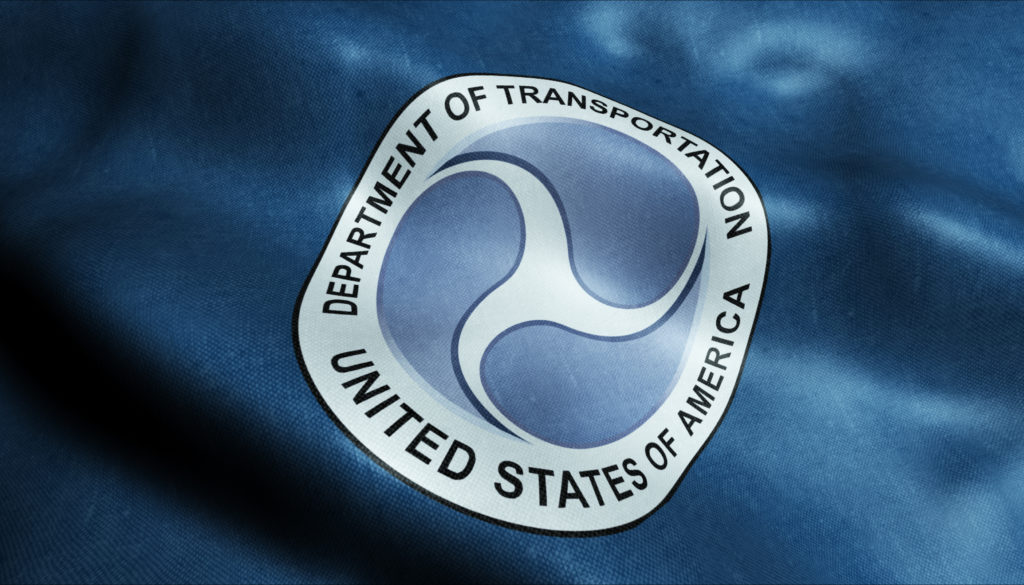
The 2020 Trucking Safety Summit, hosted by the Federal Motor Carrier Safety Administration August 5th, focused on finding ways to improve safer operation of commercial motor vehicles throughout the country.
Stakeholders, including drivers, safety technology developers, motor carriers, safety advocacy groups, and federal and state partners, were allowed to discuss their ideas on improving road safety during the virtual event, hosted from the U.S. Department of Transportation’s headquarters in Washington.
All presentations and public participation were provided electronically in order to follow federal guidelines around public events held during the COVID-19 pandemic. The safety summit was originally scheduled for mid-March, but had to be postponed due to the current public health emergency.
National Highway Traffic Safety Administration data have shown an increase in large truck-involved crash fatalities over the last few years, an issue that was a major focus of the online event.
“To respond to this trend, FMCSA continues to work with state entities, industry, and others to identify new approaches to safety,” said the summit announcement. “These approaches can involve technology, company management practices, enforcement, outreach and education, and other techniques–encompassing a holistic approach to truck safety.”
The virtual meeting consisted of six individual panel discussions, with FMCSA also streaming live video of the summit to allow viewers to weigh in. The event began with an association perspective moderated by Deputy Administrator Jim Mullen, along with ATA’s Chris Spear, NTTC’s Dan Furth, Road Safe America’s Steve Owings, and OOIDA’s Lewie Pugh on the panel. Next was a “What’s Working” discussion by Schneider National‘s Steve Parker and Thomas DiSalvi, followed by a second “What’s Working” discussion by Rollin’ B’s Shannon Watson and Ingrid Brown. There was also a state partner discussion, a panel discussion on industry technology, and a “Florida Safety Story” discussion which included members of the Florida Trucking Association and Florida Highway Patrol. Special guest speakers during the summit included a FHWA Administrator and NHTSA Deputy Administrator.
The summit was originally set to follow up on the Transportation Research Board’s annual meeting in January, where Jim Mullen explained that the agency would be working to reverse the increase in recent large-truck fatalities.
“When I assumed this role as acting administrator three months ago, the members of this panel asked me, what are my top priorities,” said Mullen. “That, to me, was a no-brainer. The top priority for me at this agency is to reverse that four-year trend increasing fatalities involved with large trucks and buses.”
Jack Van Steenburg, chief safety officer for FMCSA, reiterated Mullen’s worries around the trend of big-rig-involved deaths over the last four years in a briefing about the industry during TRB.
Between 2017 and 2018, the number of trucks weighing between 10,001 and 14,000 pounds involved in deadly crashes rose by 4.6%, and the number of trucks over 26,000 pounds involved in these crashes rose by 1.6%, according to Van Steenburg. In addition, the number of big-rig occupant deaths increased from 815 to 885 between 2016 and 2018. Of truck drivers who were ejected from their vehicles in fatal crashes, over 40% were not wearing a seat belt.
Earlier this year, the FMCSA released a formal request for public comment regarding the best ways to study contributing factors in large-truck crashes. The Large Truck Crash Causal Factors Study will replace a 15-year-old study that has been used to make policy decisions by the agency.
“In the more than 15 years since the original study, many changes in technology, vehicle safety, driver behavior, and roadway design have occurred that affect how a driver performs,” said the agency in its formal request. “Since the study ended in 2003, fatal crashes involving large trucks decreased until 2009, when they hit their lowest point in recent years (2,893 fatal crashes). Since 2009, fatal crashes involving large trucks have steadily increased to 4,415 fatal crashes in 2018, a 52.6% increase when compared to 2009. Over the last three years (2016-2018), fatal crashes involving large trucks increased 5.7%.”
FMCSA has also been working on “completing the picture of crashes” through a study that will use the agency’s crash datasets in addition to other information sources to create a full picture of big-rig and bus crashes in order to better determine the root causes at hand.
Reader Interactions